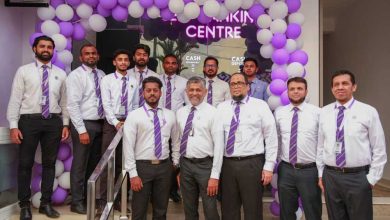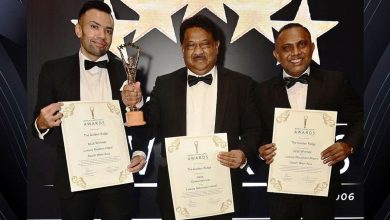EDOTCO
Open doors for greater investment in telco infrastructure – EDOTCO
Service providers must be given golden opportunities to monetise infrastructure investment to further propel the country’s economic growth.
Introduction of Independent and empowered mobile tower companies (TowerCos) could unlock nearly USD 1 Billion in foreign direct investment over the next five years and provide connectivity to five million under-connected Sri Lankans, opines Gayan Koralage, Director of Group Strategy at EDOTCO Group. Rural connectivity in Sri Lanka could be greatly enhanced through independent neutral party TowerCos, he adds, noting the window of opportunity is closing with the hope regulators in Sri Lanka would liberalise the market to capitalise on the connectivity’ gold rush’, especially now when plenty of western private equity and infrastructure funds are looking for prospects for their investments in the Asian region.
“There are opportunities for neutral party host public-private partnerships similar to Indonesia’s BAKTI (Telecommunications & Information Accessibility Agency) program and Malaysia’s JENDELA (National Digital Infrastructure Plan) program that aims to accelerate digital connectivity of the un-connected and under-connected population in various parts of the respective countries.
As per the current regulatory framework and law in Sri Lanka, only telecom operators could build, own and operate telecom towers and related infrastructure, which is often an inefficient way of deploying scarcity of capital in any telecom industry. Deepening tower sharing with the independent TowerCos model could bring down the cost per gigabytes for the end user, enabling them to be part of the global digital economy. Countries like Indonesia, the Philippines, Malaysia and Thailand are riding on such neutral party hosted towerco model and investments to accelerate the people’s and the nation’s economic growth. Pointing to the Philippines as an example, Koralage said two of three operators have recently monetised up to 80 per cent of their own towers and raised approx USD 6 billion, enabling country to enhance foreign direct investments and operators to deploy fresh capital to enhancing their 4G and 5G networks. “Sri Lankan telecom industry could follow the same roadmap. This gold rush is not going to be here forever. I’m aware that as part of the IMF package, there have been various conversations between the regulator, telecom operators and credit agencies to introduce sector reforms to the telecom industry including “de-layering” of telecommunications infrastructure where towers, fiber, small cells etc could be spin off and onwards invite foreign direct investment in neutral party hosted model. I think this latest development is indeed in the right direction,” Koralage added.
Established in 2012, Malaysia’s EDOTCO Group is the first regional integrated telecom infrastructure services company in Asia, providing end-to-end tower services. With over 55,000 towers across Malaysia, Indonesia, Sri Lanka, Bangladesh, India, Cambodia, Pakistan, Philippines, Myanmar and Laos, EDOTCO is ranked amongst the top six TowerCos in the world by tower count and sits with the top three with respect to most recent year’s growth parameters.
“We are in the global top three in terms of growth, in a highly competitive category which is par with American Towers, Indus Towers and China Towers, etc. So, that’s the very definition of being the largest Asian multi-country TowerCo being realised. We had three design objectives at the onset, and one of them was scale. The larger the scale, the better, as it significantly reduces the cost per tower. It should become cheaper than the operator, and we have achieved that,” Koralage remarks.
Secondly, co-location or tower sharing. The greater the sharing, the greater the savings on energy, field operations, fibre, etc., as various discounts kick in. This translates to greater savings and costs to customers per GB consumed.
The third element is innovation, such as introducing alternative materials and designs, including bamboo and carbon fiber. “At any given time, any successful large scale TowerCos should be cheaper than its competition and telecom operators. Compared to what EDOTCO built in 2015, the company has now optimised its capital expenditure by 45%, he said, with our scale, innovation and our focus on building towers for cheaper has provided an advantage for our customers. We have observed that the cost per GB consumed constantly reduces in markets with higher tower-sharing ratios. This is something to consider for frontier markets like Sri Lanka where neutral party host towerco model yet to be introduced”, Koralage said.
EDOTCO have pioneered multipurpose street furniture in Sri Lanka, which includes smart lamp poles with streetlights, surveillance, advertisements and also provide space for telecom operators to install their active equipment. Edotco Sri Lanka unit currently own and operate approximately 700 poles and have signed customer contracted with all telecom operators and carry approx. 15% data traffic in the country – A Board of Investment Section 17 approved investment with a commitment of USD 55mn carrying the ambition to deploy over 2,000 such units and 3,000 energy-sharing systems over the next three to five years.
In Sri Lanka, telecom active equipment, telecom towers and related power systems are treated as ‘telecom apparatus’, and there are certain restrictions around such infrastructure. There are about 7,000 towers in Sri Lanka, and 100% of them are owned by telecom operators without a viable path to monetize and provide returns to its shareholders via hosted neutral party towerco model. It is a different outlook in India, where the telecom industry is more advanced and mature. The tower infrastructure industry in India has recently gone through consolidation and has about 350,000 towers in the market, and almost all of them have been monetised.”
Consistent with the global average, Sri Lanka’s data consumption is about 8GB per month per customer. This usage will be tripled by the end of this decade with the cusp of the digital economy in the country. The MNOs in last 35 years of its existence have invested approx USD 4 billion in the industry, and industry must still invest 2-3 times of above investment in next decade or so to build three time of data capacity to drive digital adoption, Koralage opines.
“Does the free cash flow of the current telecom industry have sufficient funds to finance it? Or should we attract new foreign direct investment into the country? I think we are more angled towards the latter. In my view, to grow the capacity three times, if you can open up telecom licensing for global infrastructure players, foreign investors would come into this market and funnel extra capital to build that capacity. And at the same time, to help monetize captive capital for the current operators so that we turn the industry to investment grade category”
With rising energy rates in Sri Lanka, the solution is to turn towards renewable energy, with solar offering recovery over seven years. Of EDOTCO’s 55,000 sites, close to 8,000 are green sites in places like Bangladesh, Pakistan and Myanmar. Koralage opines MNOs mustn’t invest in this area and instead focus on purchasing active radio equipment. The solution for Sri Lanka is to decouple or delayer passive infrastructure including energy, invite neutral parties who could create a rich, robust infrastructure, and give these companies the impetus to achieve certain green targets. That needs capital because green is not cheap, but the payback is faster, Koralage says.
Commenting on the impacts of the IMF programme in Sri Lanka, Koralage says Sri Lanka must find some references to similar countries that employed a rebound plan encompassing digital solutions. During the Southeast Asian economic crisis, they were looking at providing incentives for digital economies, and this decade could be all about looking at what percentage of the national economy will be transferred to the digital economy. Faster growth is very much dependent on that, Koralage says. Sri Lanka is roughly about five per cent digital economy, whereas Malaysia is about twenty per cent. Connecting the traditional economy to the digital economy is essential, he noted.
“Now, to get to that point, we don’t have a robust data network. Currently, our data speed is not on par with our international peers. Our inflation adjusted cost per GB is a bit off compared to the regional benchmarks. We have about five million people under-connected. I think the way to solve this is on two fronts. The first is to attract new foreign investment. We have about 7,000 towers currently and will probably need another 7,000, including street furniture, over the next decade. This requires huge CAPEX investment, and we have limited resources in the telecom sector. Secondly, allow the MNOs the opportunity to monetise their tower or fibre portfolios. Doing so will raise Sri Lanka’s telecom sector’s profile, and investing in the country’s digital infra will be attractive for companies. For the digital economy to grow, you need to do justice to the infrastructure layer of the telecom sector. That’s how the sequence works,” he stated.
Koralage recognizes regulatory support towards the MNOs when seeking approvals for active equipment. But, he also strongly believes and advocates for the country to open up the market for independent TowerCos, which will seriously enhance investment opportunities. Commenting on planned state sector reforms, Koralage said today’s global investment status, perhaps compared to 15 years ago, there may be less interest in investment in core telecom assets, but there are many takers to buy telecom infrastructure, while keeping the current telecom sector ownership unaffected. “So this is a one-time golden ticket for us to retain ownership and raise dollar capital by attracting this vertical investment. I think this is an opportunity we should not give a miss.”






